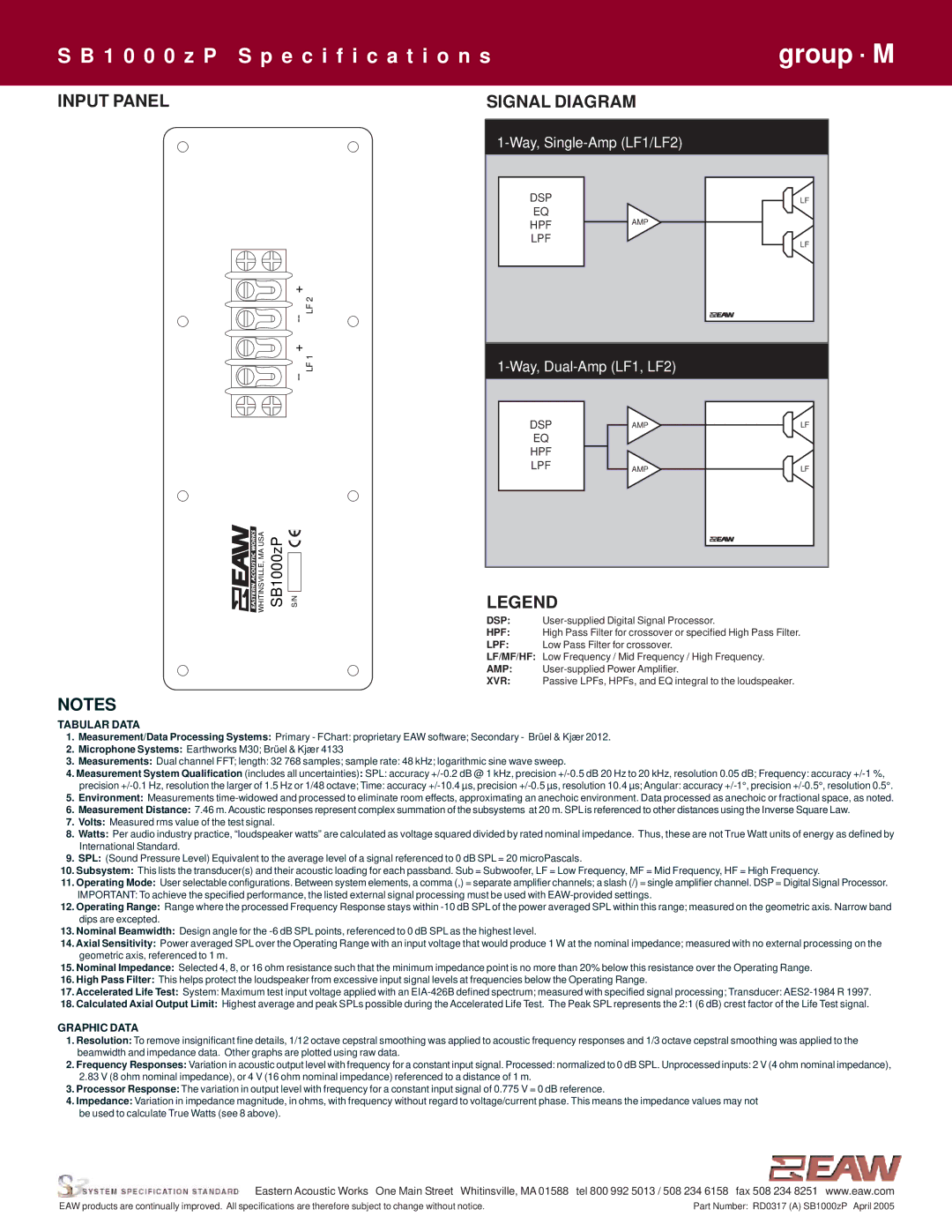SB1000zP specifications
The EAW SB1000zP is a high-performance subwoofer designed for professional audio applications, particularly in live sound reinforcement, installations, and large events. This subwoofer is known for its impressive bass response and reliability, making it a preferred choice among audio engineers and sound designers.One of the main features of the SB1000zP is its high-output capabilities. Powered by a robust 1000-watt peak amplification system, this subwoofer delivers deep, powerful low frequencies that can fill large venues with incredible depth and clarity. The design includes a custom-engineered 18-inch driver that offers exceptional transient response, ensuring that bass notes are not only loud but also precise.
The technology behind the SB1000zP revolves around advanced DSP (Digital Signal Processing) optimization. This technology allows for enhanced control over frequency response, enabling users to tailor the sound output to specific environments. With features like adjustable high-pass and low-pass filters, users can seamlessly integrate the subwoofer with full-range loudspeakers, creating a balanced audio experience.
Another notable characteristic is the enclosure design. The SB1000zP is housed in a rugged, modified birch plywood cabinet that not only provides durability but also enhances acoustic performance. The enclosure is tuned to reduce unwanted resonances, ensuring that only the desired frequencies are projected. Additionally, the subwoofer is equipped with a rear-firing port that further enhances its efficiency and extends low-frequency response.
The versatility of the SB1000zP is further exemplified by its user-friendly design. It features multiple input options, including balanced XLR and speakON connectors, allowing for easy integration into various audio systems. The subwoofer can be employed in both stand-alone configurations or as part of a larger array, providing flexibility for different setups.
Overall, the EAW SB1000zP stands out in the market for its combination of power, precision, and build quality. Whether used in concert halls, festivals, or commercial installations, this subwoofer offers remarkable performance that meets the demands of any professional audio application. With its state-of-the-art features and engineering, the SB1000zP remains a top choice for those seeking reliability and exceptional sound quality in their low-frequency solutions.

